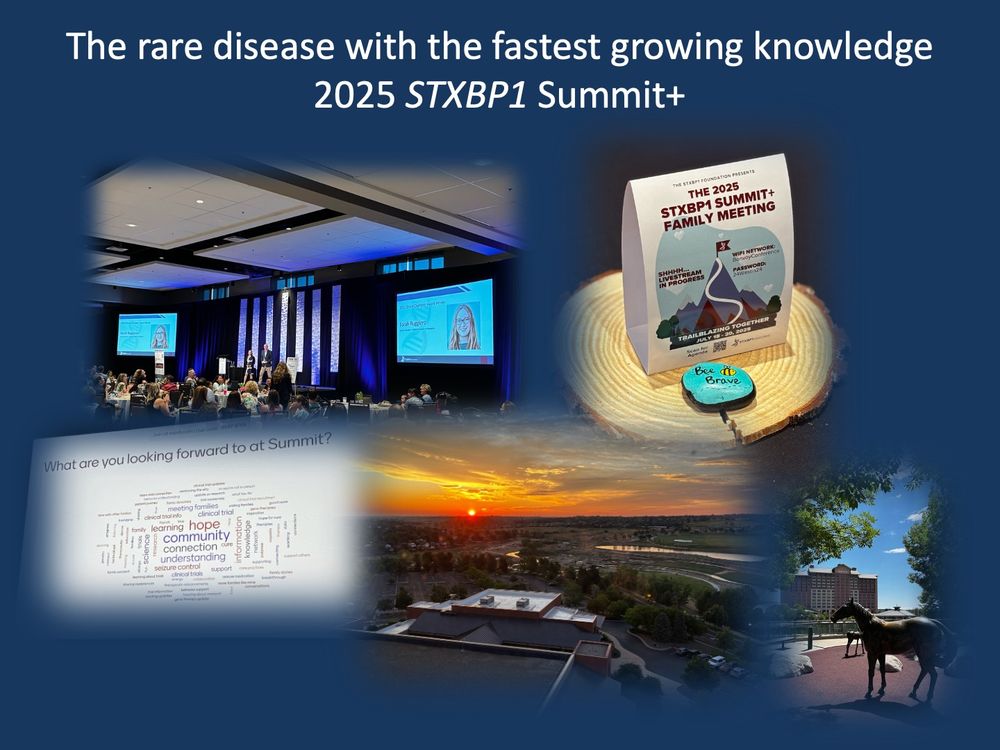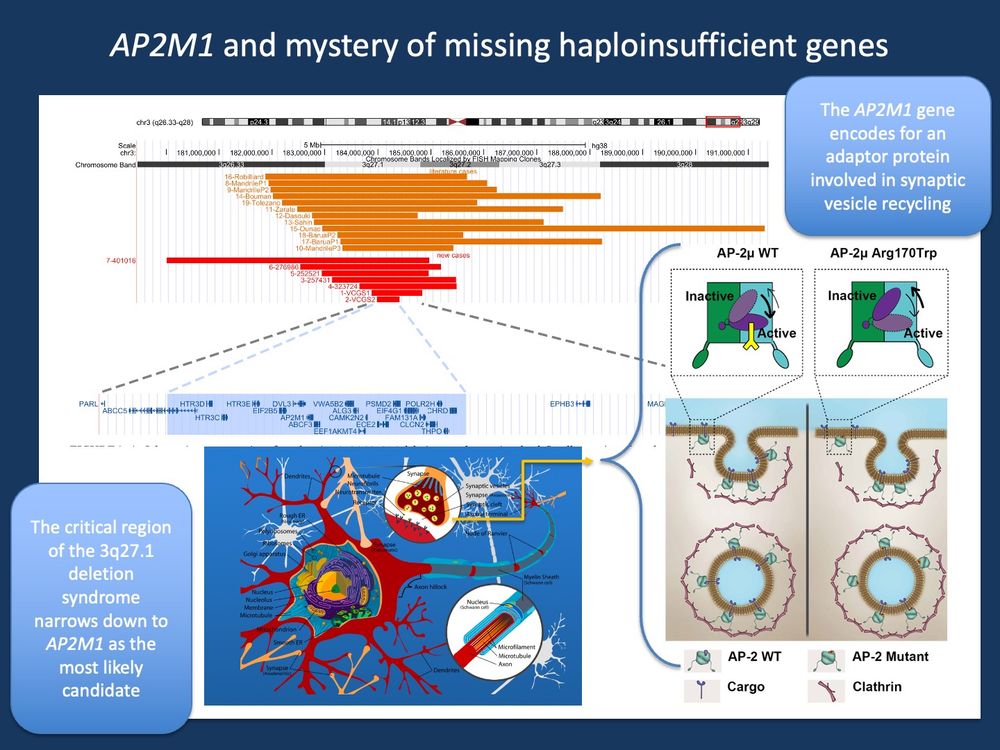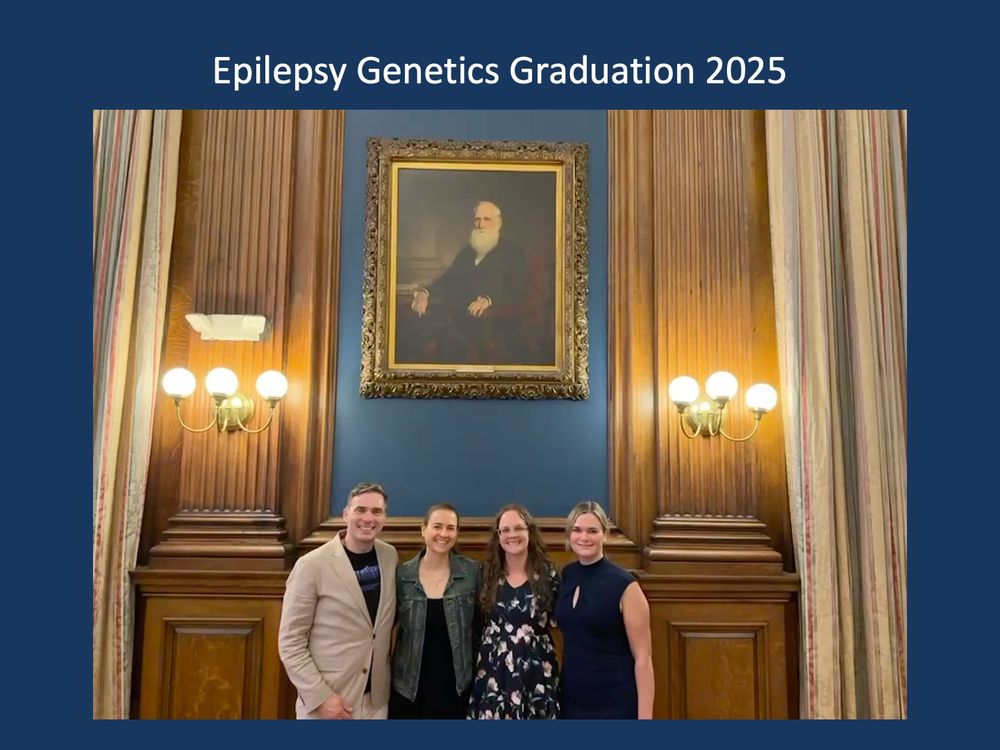
...we just published our blog post on the revision of ACMG criteria for epilepsy-related sodium channels
epilepsygenetics.blog/2025/09/04/t...

...we just published our blog post on the revision of ACMG criteria for epilepsy-related sodium channels
epilepsygenetics.blog/2025/09/04/t...
VUS. The story begins with a patient in clinic. A young child with severe epilepsy, carrying a variant in SCN1A, the classic gene for Dravet Syndrome. But the variant is labeled a variant of uncertain significance (VUS). Dravet…
VUS. The story begins with a patient in clinic. A young child with severe epilepsy, carrying a variant in SCN1A, the classic gene for Dravet Syndrome. But the variant is labeled a variant of uncertain significance (VUS). Dravet…
..we just published our blog post on the struggle of generative AI to draw a synapse.
epilepsygenetics.blog/2025/08/30/t...

..we just published our blog post on the struggle of generative AI to draw a synapse.
epilepsygenetics.blog/2025/08/30/t...
Singularity. A few months ago, Sam Altman, the CEO of OpenAI, published a short essay about the future of artificial intelligence. His central message was a gentle role for AI—a vision in which technology supports us quietly in the background…
Singularity. A few months ago, Sam Altman, the CEO of OpenAI, published a short essay about the future of artificial intelligence. His central message was a gentle role for AI—a vision in which technology supports us quietly in the background…
...we just published our blog post on Acute necrotizing encephalopathy (ANE).
epilepsygenetics.blog/2025/08/28/i...

...we just published our blog post on Acute necrotizing encephalopathy (ANE).
epilepsygenetics.blog/2025/08/28/i...
ANE. A rare complication with hidden genetic clues. Imagine a healthy child who goes to bed with a fever and wakes up unable to recognize their parents, slipping rapidly into coma. This is the terrifying course of acute…
ANE. A rare complication with hidden genetic clues. Imagine a healthy child who goes to bed with a fever and wakes up unable to recognize their parents, slipping rapidly into coma. This is the terrifying course of acute…
...we just published our blog post on the recent publication by Zhou et al. in Nature Neuroscience
epilepsygenetics.blog/2025/08/26/d...
![Figure 1. Gene ontology enrichment and overlapping genes in a cross-species analysis for immature granule cell (imGCs). On the left, the top biological pathways are shown for imGC-enriched genes across humans, macaques, pigs, and mice. These pathways, grouped and color-coded by Gene Ontology (GO) terms, highlighting the processes most important for immature neurons, such as neuronal development, synaptic plasticity, and ion transport. This view emphasizes that, while the precise genes differ from species to species, the biological themes remain consistent. On the right, a Venn diagram illustrates how few imGC-enriched genes are shared between species. Only a small set of genes is common to all four, with an additional subset found only in humans and macaques. The lists of shared genes in the boxes serve as concrete examples of this limited overlap, reinforcing the central message of the study: processes can be conserved even when the genes executing them diverge. [Figure modified from data provided by the authors].](https://cdn.bsky.app/img/feed_thumbnail/plain/did:plc:34wa2a54fkqpvbh65qdoqt4h/bafkreiev4eo5vvrsbb7xginra3bs7okf3riur45ojca4mtbsxn6tcnhhkm@jpeg)
...we just published our blog post on the recent publication by Zhou et al. in Nature Neuroscience
epilepsygenetics.blog/2025/08/26/d...
A paradox in the hippocampus. Immature dentate granule cells are often described as the “plasticity reserve” of the hippocampus. They provide a pool of neurons that integrate into existing circuits, supporting learning,…
A paradox in the hippocampus. Immature dentate granule cells are often described as the “plasticity reserve” of the hippocampus. They provide a pool of neurons that integrate into existing circuits, supporting learning,…
...we just published our blog post on our recent publication on neuronal signatures in umbilical cord blood methylation patterns.
epilepsygenetics.blog/2025/08/24/t...

...we just published our blog post on our recent publication on neuronal signatures in umbilical cord blood methylation patterns.
epilepsygenetics.blog/2025/08/24/t...
Neurodevelopment. Congenital heart disease (CHD) refers to a broad group of structural abnormalities of the heart that are present at birth and affect approximately 1% of all live births. Over the past two decades,…
Neurodevelopment. Congenital heart disease (CHD) refers to a broad group of structural abnormalities of the heart that are present at birth and affect approximately 1% of all live births. Over the past two decades,…
...we just published our annual blog post about insights into rare disease research at the beach
epilepsygenetics.blog/2025/08/16/t...

...we just published our annual blog post about insights into rare disease research at the beach
epilepsygenetics.blog/2025/08/16/t...
Rehoboth. It has been a while since I posted my annual post-beach-vacation thoughts about how my experiences at the shore made me think about science. I initially started these posts after a vacation in Marielyst, Denmark when I realized that my…
Rehoboth. It has been a while since I posted my annual post-beach-vacation thoughts about how my experiences at the shore made me think about science. I initially started these posts after a vacation in Marielyst, Denmark when I realized that my…
...we just published our blog post on a recent large-scale genetic study on stuttering.
epilepsygenetics.blog/2025/08/13/c...

...we just published our blog post on a recent large-scale genetic study on stuttering.
epilepsygenetics.blog/2025/08/13/c...
Fluency. When we think of stuttering, we might first think of speech therapy, of pauses and repetitions, and of the courage it takes to speak when words get stuck. But what if we could step back and see its genetic architecture laid…
Fluency. When we think of stuttering, we might first think of speech therapy, of pauses and repetitions, and of the courage it takes to speak when words get stuck. But what if we could step back and see its genetic architecture laid…
...here is our blog post on BMAL1 (ARNTL), a core component of the circadian clock, and neurodevelopmental disorders.
epilepsygenetics.blog/2025/08/10/b...

...here is our blog post on BMAL1 (ARNTL), a core component of the circadian clock, and neurodevelopmental disorders.
epilepsygenetics.blog/2025/08/10/b...
The clock gene. Every cell in the human body keeps time. This intrinsic rhythm is roughly 24 hours long and driven by the molecular circadian clock: a transcriptional feedback loop that helps regulate sleep, metabolism, and…
The clock gene. Every cell in the human body keeps time. This intrinsic rhythm is roughly 24 hours long and driven by the molecular circadian clock: a transcriptional feedback loop that helps regulate sleep, metabolism, and…
...in July 2025, I was granted tenure at the University of Pennsylvania.
...here is my blog post about the historic Cistercian abbey in my hometown, academic reforms in the 19th century, and what to do with tenure in 2025.

...in July 2025, I was granted tenure at the University of Pennsylvania.
...here is my blog post about the historic Cistercian abbey in my hometown, academic reforms in the 19th century, and what to do with tenure in 2025.
Monastic. I am now roughly one month into the first real job of my life. I celebrated this transition by spending a week with my family in Kamp-Lintfort, Germany, a small town at the Western edge of the Ruhr area known for its coal mining heritage and Cistercian abbey.…
Monastic. I am now roughly one month into the first real job of my life. I celebrated this transition by spending a week with my family in Kamp-Lintfort, Germany, a small town at the Western edge of the Ruhr area known for its coal mining heritage and Cistercian abbey.…
...we just published our post on our recent publication on the importance of identical variants at conserved sites in epilepsy genes.
epilepsygenetics.blog/2025/07/29/t...
![Figure 1. Study by Brünger et al., 2025: Presence of pathogenic missense variants at conserved paralogous amino acid residues within genes of the same gene family can inform variant pathogenicity classification, thereby increasing the number of pathogenic variants that can be classified using the PS1 and PM5 ACMG criteria. In brief, pathogenicity echoes across paralogs, and our findings provide a roadmap that allowed for the extension of the ACMG/AMP criteria released in January 2025. [Figure modified from Brünger et al., 2025 under a CC BY license.]](https://cdn.bsky.app/img/feed_thumbnail/plain/did:plc:34wa2a54fkqpvbh65qdoqt4h/bafkreifhrgt62mxxrmd5jl6l4umpuetqysyc4gifjztgb7dazcx7buaxme@jpeg)
...we just published our post on our recent publication on the importance of identical variants at conserved sites in epilepsy genes.
epilepsygenetics.blog/2025/07/29/t...
Paralogs. Every week in our variant review meetings, we encounter a familiar issue: understanding a missense variant of uncertain significance. Unless it matches a known disease-associated variant or is found to be de novo, our confidence often stalls.…
Paralogs. Every week in our variant review meetings, we encounter a familiar issue: understanding a missense variant of uncertain significance. Unless it matches a known disease-associated variant or is found to be de novo, our confidence often stalls.…
...we just published our blog post on the 2025 STXBP1 Family Summit+ in Westminster, Colorado
epilepsygenetics.blog/2025/07/26/t...

...we just published our blog post on the 2025 STXBP1 Family Summit+ in Westminster, Colorado
epilepsygenetics.blog/2025/07/26/t...
...we just published our blog post on AP2M1 as the candidate gene in the 3q27 microdeletion
...and the broader issue of missing haploinsufficient genes
epilepsygenetics.blog/2025/07/21/a...

...we just published our blog post on AP2M1 as the candidate gene in the 3q27 microdeletion
...and the broader issue of missing haploinsufficient genes
epilepsygenetics.blog/2025/07/21/a...
...we just published our post of the discovery of RBFOX3 as a candidate gene from the 100,000 Genomes Project

...we just published our post of the discovery of RBFOX3 as a candidate gene from the 100,000 Genomes Project
...our blog post celebrating the 5th anniversary of our ENGIN epilepsy genetics fellowship
epilepsygenetics.blog/2025/07/08/f...

...our blog post celebrating the 5th anniversary of our ENGIN epilepsy genetics fellowship
epilepsygenetics.blog/2025/07/08/f...

